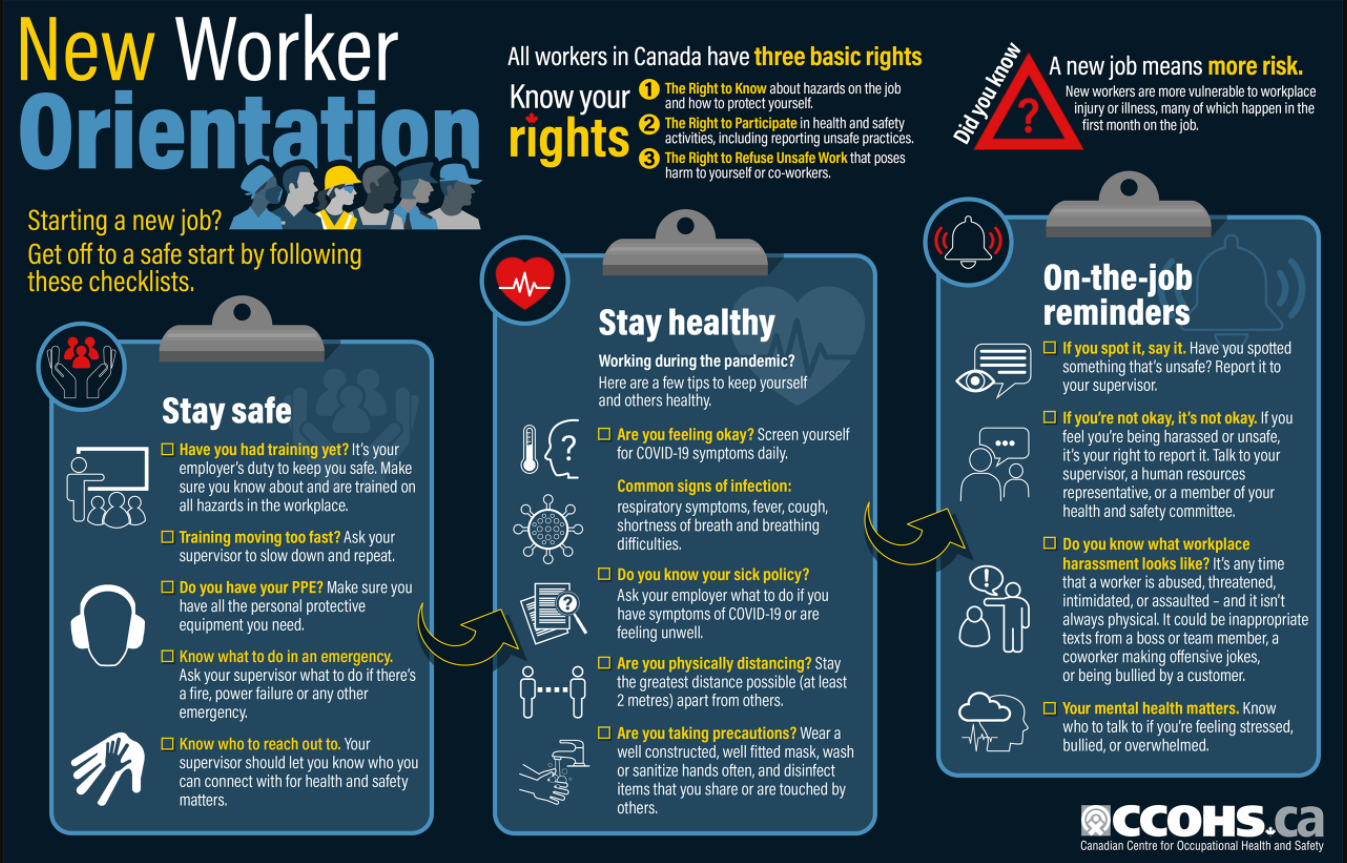5 Tips For Onboarding New Staff That Lower Turnover, Costs, And Team Stress:
1. Make sure existing staff have buy-in to the success of new staff
This concept moves beyond just “having a welcoming team atmosphere” – although that is important anywhere. What’s key here is that existing staff understand why you’re bringing in additional staff, and how that’s going to benefit them.
This results in new hires being welcomed and supported, rather than viewed with suspicion or contempt: a sure-fire way to have new staff running for the hills.
Additional staff means:
- more shift coverage to cover for vacations, absences, training, & more
- fewer demands for staying late
- a less stressful pace which often directly impacts rate of accidents/injuries
- ability to socially distance at work and help protect each other from infection during COVID-19 restriction
2. Identify an appropriate person to conduct first-day onboarding
Select a person who is experienced, but also a “people person” who demonstrates patience and good communication skills, who will take pride in setting up a new person for success.
New hires settle in best (and stay longer) when they feel there’s a trusted person walking them through initial processes; someone who is approachable and takes time to answer their questions and concerns.
It’s also important to share what opportunities the position/company offers, for example:
- Chance to learn new skills or get new certifications
- Chance to take part in employee recognition or incentive programs
- Chance to contribute to health and safety culture through committees etc.
- Chance to build a career through getting hired full time
3. Set up a buddy-system for mentoring and developing new staff
Apart from the first-day orientation person, ensure that each new hire is matched with a mentor or “buddy” who can show them the ropes, invite them to eat lunch together, and who they can come to for help getting additional training etc.
It works even better if they can work side-by-side together for the first week or so. Don’t underestimate the power of helping new hires feel like someone is invested in their success.
4. Preschedule 5 minutes daily to do check-ins with new staff
Set aside 5 minutes at the end of every day in the first week to touch base with new hires. (You can even do this for a group of new hires rather than one on one).
This creates an opportunity for them to ask questions, bring up requests for additional training/mentoring, and to address any concerns.
This often allows you to circumvent problems before they arise, provide coaching, and improve processes and communication.
5. Download and distribute the “new worker orientation” poster
New hires (particularly young or new workers) consistently represent the population with the biggest risk for accident and injury at a new job.
Encourage a work-safe culture with new hires from day one by handing out and reviewing the New Worker Orientation poster from the Canadian Centre For Occupational Health And Safety (ccohs.ca ). Post it in lunch rooms, locker rooms, and meeting spaces.

For additional resources from ABL, go to our Downloadable Resources Page or check out our other blogs.









